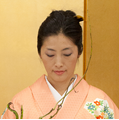It’s not like Japan, where students who regularly attend school can not only complete their mandatory education through age fifteen (junior high school), but can pretty much all go on to high school without having to repeat any grades. In Germany, there are no such guarantees.

To start, the most popular track is the eight-year elite track at a Gymnasium school to earn the Abitur qualification needed to enter university. For Japanese, the ideal is to go to a strict Catholic elementary school for four years and then enter one of these Gymnasium schools. But it’s actually so difficult to get in that only fourth-grade students with all As and Bs are accepted. Even the students who do make it are subject to screening procedures that may force them to repeat a year or go down in rank if they do not keep up with their coursework. Only about 60–70% of kids actually make it straight through to graduation without these detours. You can imagine how pressured they feel if they need to remain honor roll students just to survive the cut.
The next most popular track is the Gesamtschule, which offers students a complete curriculum that they can continue from grades one to thirteen. Students who perform especially well at Gesamtschule can also obtain Abitur qualification, so those who aren’t sure yet whether they want to go on to higher education typically select this option.
Kids who are not great students but still want to have a career or get a Meister vocational certification at a professional school choose the Realschule track. This school allows them to work towards going to a vocational college in the future.
The Hauptsschule is a five-year program that corresponds to junior high school in Japan. In the past, Hauptsschule students were aiming to be professionals, but with globalization taking off in recent years, they are becoming schools for emigrants and other students whose native language is not German.
There are plenty of parents who have concerns about a German education system that forces kids to determine their future by age ten, and the thirteen-year Waldorf-Steiner Schule has become a popular alternative recently. I’ve also taken the plunge and enrolled my daughter in a Waldorf-Steiner Schule this year.
The Waldorf education was developed by a 20th-century Austrian philosopher and esoteric thinker named Rudolf Steiner. His educational methods are designed to develop children into people who can freely make their own decisions. The program avoids television and other forms of media, instead focusing on maximizing students’ creative abilities from an artistic perspective.
Steiner’s educational philosophy said that human beings—or their internal makeup—was divided into three categories—physical/corporal (leib), heart/mind/soul (seele), and the spirit (geist).
He also divided human development into seven-year stages. Children are said to develop the etheric body (seat of life) during the first seven years, the astral body (seat of emotions and impressions) during ages 7–14, and the ego (seat of awareness) during ages 14–21.
For this reason, children are to avoid reading and writing for the first seven years of life, instead prioritizing the development of their imagination by listening to stories read aloud.
The Waldorf educational system therefore diverges from conventional education, and though some people doubt its effectiveness, it has recently received attention for developing exceptional adults who are able to think for themselves.
To start, the classes are quite unique and have no textbooks. Students take notes and write their own textbooks. A single teacher takes charge of all grades one through eight, so the quality of the education can depend on the skill of the teacher. Luckily, though, we were blessed with an excellent one.
First graders attend school Monday through Friday in the mornings only. They don’t have different periods in which they learn German or math. Instead, they have “epochs” where the same subject is taught for three or four weeks in a row.
When learning the numbers one through ten, for example, the students spend day after day taking their time to talk about how each of the numbers are constructed in order to stimulate their imaginations.


The first-graders also have a handicraft class called Handarbeit, where they learn weaving. This requires fine finger movements from the time they are young, and the students develop confidence while they take pride in creating dolls and other objects out of natural materials like wood and wool yarn.
The Waldorf-Steiner Schule offers an amazing educational program that gets kids completely absorbed in what they are doing, develops the right brain, and has them memorize information through the use of images. But during the last two years (when the ego is being developed), students also study hard for their Abitur qualification and have the opportunity to go on to university. (Of course, many of the kids are not great at book learning and end up transferring to artisan training programs partway through… eek.)
There are no tests or report cards in the early years, since the program is the antithesis of cramming and scoring. But apparently there are a lot of Waldorf-educated students that do work hard to go on to university and become doctors, engineers, or corporate managers. So instead of pushing my daughter to make up her mind about her future before she’s ready, I decided to take a chance and put her in a place that take good care of her in the meantime.






























































